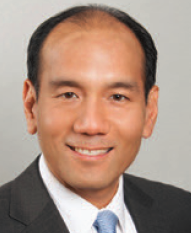A colleague and friend recently approached me about starting a new retina meeting. The idea was good, but nevertheless the conversation made my stomach turn and led me to audibly groan. Really, do we need another?
Why are there so many retina meetings? We are inundated with meetings. There are, according to my rough calculations and Google searches, at least an average of about one meeting involving retina every 5.7 days, probably many more. Many of us spend far more time at meetings than we do in the operating room or out to dinner with our partner/spouse/kids!
It’s a veritable alphabet soup of meetings: ASRS, IOIS, ARDS, ACRC, VBS, AAO, FAVS, ARVO, WOC, EVRS, WRC, etc. And, these are just some of the national and international CME meetings. The host of local society meetings, dinner symposia, advisory boards, steering committee meetings and planning sessions round out a truly overwhelming schedule for many in our beloved space.
Nevertheless, the more meetings I’ve attended, the more I’ve appreciated the value of each. Each embodies a unique character. Some are didactic while others are oriented to discussion; some are surgical; some emphasize new data while others are case-based. Many aim to incorporate all of these themes to differing degrees. They range from relaxed-anything-goes to erudite-choose-your-words-carefully. Something for everyone.
If your go-to meetings are the big ones, I encourage you to seek out some of the smaller meetings. The big meetings are fantastic, and hectic. The smaller meetings can provide unique opportunities for genuine debate, discussion and multi-directional exchange. Plus, they’re often much more family friendly with smaller crowds that foster closer connections with colleagues. Amidst the winter-season of ski meetings, this year I’m attending the Squaw Valley Retinal Symposium in Tahoe for the first time, and look forward to hitting the slopes with my son.
In the end, I agreed to move ahead with the new meeting, this one aiming to provide a forum for debate and discussion related to optimizing clinical trial endpoints and designs. We are fortunate to be retina specialists, a group defined by productivity, willingness to engage new technologies and approaches, and a deep-seated drive to advance the boundaries of knowledge.
As far as I can tell, our plethora of meetings is unique across medicine, and something to cherish. See you at the meetings! RS
 |




